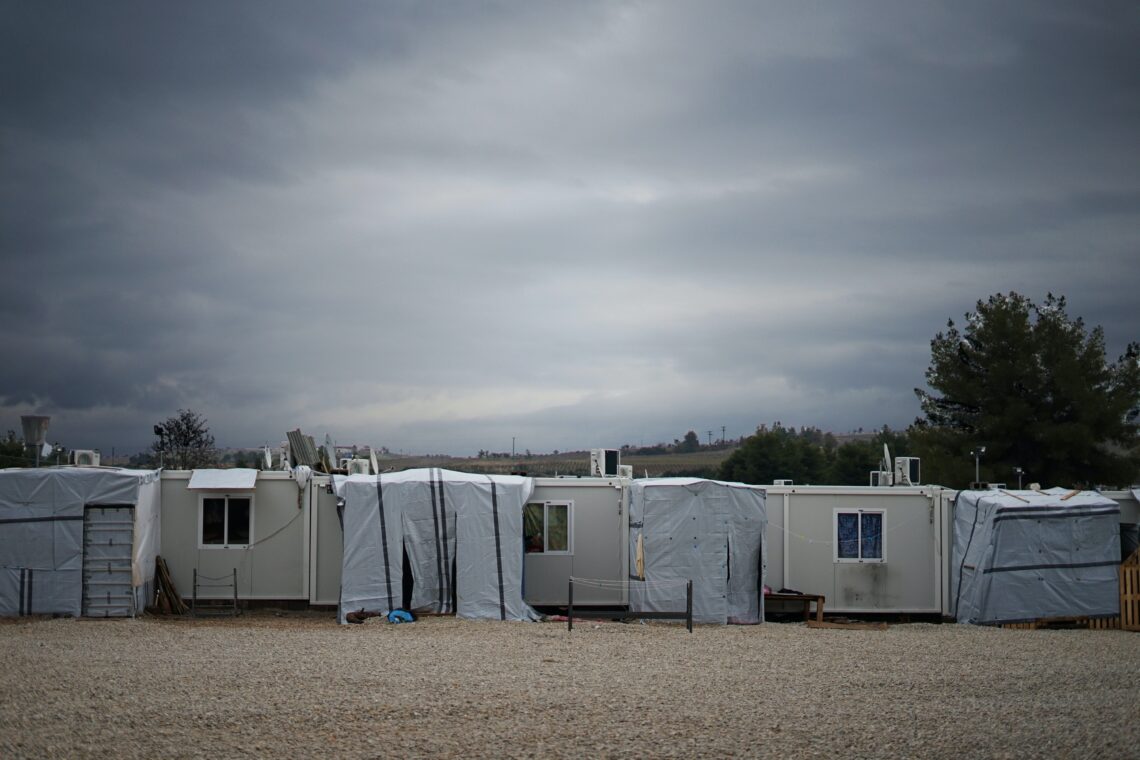
Case: National & Kapodistrian University of Athens, (Athens, Greece)
The Department of Early Childhood Education at the University of Athens conducted a pedagogical intervention at the Elaionas refugee shelter, aiming to address the unique needs of the refugee population. The intervention unfolded in three phases, adapting to the changing circumstances and accommodating the transient nature of the shelter’s population. Collaborations with various museums facilitated cultural exchange, bridging the gap between newcomers and the local society. The initiative engaged children creatively, preparing them for integration into schools through connections established with other children and exposure to Greek culture. Flexibility, adaptability, and collaboration were key elements in the successful design and implementation of the program.
Background
Established in the academic year 1987-1988, the Department of Early Childhood Education at the University of Athens is dedicated to cultivating a new generation of scholars and professionals who possess a critical understanding of social and educational realities. The department’s primary objective is to equip students with the knowledge, skills, and abilities necessary to actively engage in educational and social research and make meaningful contributions to diverse educational institutions. To achieve this goal, the curriculum incorporates a multidisciplinary approach, drawing upon the insights and perspectives of various disciplines to inform educational theory and practice.
One area of focus within the department is art education, where students explore not only the practical applications of music, painting, and theatre as pedagogical tools but also delve into their theoretical and historical dimensions. By examining the broader context of artistic disciplines, students develop a deeper appreciation for their cultural significance and explore how they can be effectively integrated into educational settings. This holistic approach encourages students to view art not only as a means of instruction but also as a powerful medium for personal expression, cultural exploration, and social transformation.
Description
The Department of Early Childhood Education and Education of the National and Kapodistrian University of Athens carried out a solidarity initiative in the form of a pedagogical intervention at the Elaionas open refugee shelter from November 2015 to June 2017. The intervention unfolded in three distinct phases, each presenting unique challenges and objectives.
During the initial phase, the refugee population at the shelter experienced constant turnover, with families and children regularly arriving and departing as the borders remained open. The fluid nature of the population made it difficult to predict the number of participants and which children would be present at any given time.
In the second phase, the context of the intervention underwent significant changes. The shelter’s population increased substantially, accommodating approximately 2,300 individuals compared to the initial 800. Although the presence of children remained transient, the longer-term stay necessitated a reevaluation of the intervention’s objectives and required ongoing adaptability and pedagogical flexibility.
In the third phase, an important development took place as a group of 35 children was selected to be relocated from Elaionas to the 132nd school of Athens as part of the Open Schools initiative of the Municipality of Athens. Accompanied by students, this move marked an attempt to provide the children with a different educational environment and opportunities beyond the shelter’s confines.
Throughout the entire intervention, the Department of Early Childhood Education and Education demonstrated its commitment to addressing the unique needs of the refugee population at Elaionas. By continuously adjusting and redesigning the pedagogical approach, they aimed to create a supportive and enriching educational experience for the children, offering them a sense of stability, connection, and hope amidst challenging circumstances.
Impact
The participation of children in the project encompassed a wide age range, spanning from 3 to 15 years old. Within the Elaionas shelter, approximately 30 to 50 children were involved at a given time, while outside Elaionas, the age range extended from 6 to 15 years old. This undertaking was ambitious and posed various challenges. However, the collaboration between the University, future teachers, and museum educators fostered a fruitful environment for exchange and interaction, holding promise for the future. Additionally, the project served as a bridge between the local community and the refugees, as it introduced cultural aspects of Greece through museum activities.
The initiative effectively engaged the children, providing them with creative outlets and sustaining their involvement during their time in Greece. Furthermore, they had the opportunity to participate in educational programs organised by museums in Athens, such as the Byzantine Museum, Benaki Museum, Museum of Ceramics, and Museum of Folk Art. As a result, many refugee children who eventually left the camp had already established connections with other children and were to some extent prepared for integration into schools.
Relevance/usability
The successful design of such programs necessitates designers to demonstrate flexibility and adaptability throughout the planning and implementation phases. Given the dynamic nature of the circumstances surrounding refugee populations, the ability to adjust and respond effectively becomes paramount. Furthermore, the collaboration with diverse museums in the city not only provided valuable resources but also created meaningful opportunities for cultural exchange. By exposing the participants to various aspects of Greek culture, the programs played a crucial role in bridging the gap between newcomers and the local society. This engagement fostered mutual understanding, appreciation, and integration, cultivating a sense of belonging and shared experiences.
References
- http://www.ecd.uoa.gr/?lang=en
- https://ayla.culture.gr/wp-content/uploads/2018/07/2016_18i_enimerotiki_synantisi.pdf
Contact information
Department of Early Childhood Education and Education of the National and Kapodistrian University of Athens
Author
Rafaella Ntana, EKEDISY
Header Photo by Julie Ricard on Unsplash


